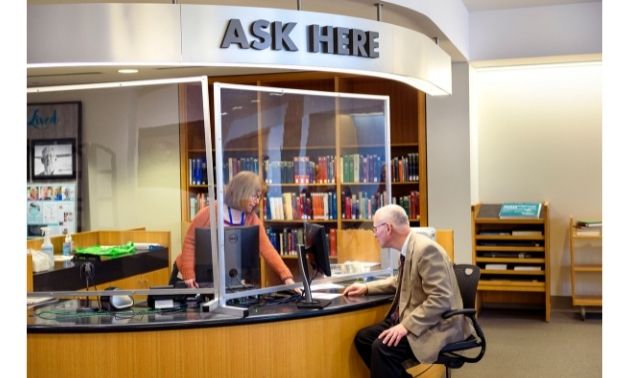by | Oct 5, 2012 | 01 What's New
Old maps can tell us a lot more than just where our ancestors lived: They put events into geographic context, reveal surprising genealogical clues, and can be incorporated into Google Earth for analysis and storytelling.
It used to be pretty difficult to find old maps to use in your family history research, but it is a lot easier these days. Libraries and archives are digitizing them and putting them online. And in the newest episode (#92) of the Genealogy Gems Premium Podcast I’ll tell you about a terrific example of a website that has set the goal of have every image they possess (allowable by copyright) digitized and on their website by early 2013
Also in this episode I’m going to tell you about something pretty shocking that happened to me recently while speaking at an international genealogy conference. I was really taken by surprise, and received some unexpected questions. I will share those with you as well as some solid answers.
It’s another packed episode. If you are a member sign in now to start listening.

Not a Genealogy Gems Premium Member yet?
There’s never been a better time to join! You will get access to videos of my most popular classes, and as of today 92 Premium episodes providing hours of genealogical education and fun.
Click here to become a Member today
by Lisa Cooke | Dec 14, 2022 | 01 What's New, Genealogy Gems Podcast, Research Skills, Source Citation
Show Notes: Finding great sources of information is part of what makes genealogy so fun! But citing those sources may not be so much. In this episode professional genealogist, Gail Schaefer Blankenau makes the case why source citation is a vital part of great genealogy research and she’s going to give us the resources to help get the job done right.
Listen to the Podcast
Show Notes
These wonderful sponsors make this free show possible:
MyHeritage DNA
Get your MyHeritage DNA kit here


Visit Fort Wayne
Fort Wayne, Indiana is the home of the second largest free genealogy library in the country. Make your plans to visit today. Learn more at https://www.visitfortwayne.com
Resources
by Lisa Cooke | Nov 9, 2012
Genealogy Gems Podcast Episodes
2012 – 2013 Season Eight
Episode 141
Behind the Scenes at the Antiques Roadshow. And what you should and should not include in your family tree.
Episode 142
Genealogy Gems Podcast listeners who are blogging about their genealogy!
Episode 143
Hear how one man’s passion for geography and history were saved from destruction, and find out what a portable scanner can do for your genealogy research and mobility.
Episode 144
Get ready to get organized! We’re going to talk about how to digitize, organize and archive your family history with Denise Levenick.
Episode 145
Blast from the Past: Episodes 5 and 6. Gems: YouTube, Bring Back Sites from the Dead, Spice Up Your Genealogy Database, Cast a Shadow on Your Ancestors, US GenWeb
Episode 146
In this episode we discuss the latest genealogy news, one listener’s fabulous use of Google Alerts, and Maureen Taylor’s new history film project.
Episode 147
Jump on the sleigh and make the rounds with me to friends of the podcast. We’ll making surprise stops at listener’s homes, drinking hot cocoa with long time friends of the show and genealogy experts, visiting with the newest member to the Genealogy Gems team, and my Grandson Davy will even make a guest starring appearance!
Episode 148
Genealogy Quick Gems: New RootsMagic App, 5 reasons you need the new YouTube app for family history, new digitized records online, sound preservation, Ancestry search tips video, and more.
Episode 149
A Blast from the Past: Episodes 7 and 8. Civil War Research and the Civil War Soldiers and Sailors System Website, A Swedish-American genealogy podcast, The Great San Francisco Earthquake of 1906, and Shake Up Your Family History research strategies!
Episode 150
Lisa celebrates her 50th birthday and the 150th episode with 50 Fabulous Family History Favorites!
Episode 151
Part 2 of 50 Fabulous Family History Favorites.
Episode 152
Highlights from Who Do You Think You Are? Live 2013 in London including an interview with Dr. Turi King who confirmed the identity of the remains of King Richard III through DNA
Episode 153
Enjoy a blast from the past with episode #10 featuring Steve Morse and his One-Step website. Then delight in Darius Gray, a genealogist and storyteller who provides tips on sharing your family history stories with your family, (recorded at #RootsTech 2013.)
Episode 154
Travel back to #RootsTech – You’ll hear 10 Top Tips for How to Bust Through Your Genealogy Brick Wall, and get the scoop on the new partnership between OCLC / WorldCat and FamilySearch.
Episode 155
Catching Up on Everything Genealogy, and WikiTree Update
Episode 156
What to do when technological changes create mayhem in your life. Also, get a sneak peek at new changes coming in Ancestry search, and women in naturalization records.
Episode 157
Blast from the Past: First up is Genealogy Gems Episode #11, first published May 07, 2007, (How to Find Pictures from the Past with Google.com, and a Family History Decoupage Plate Project) and Episode #12 (Top 10 Tips for Finding the Graduation Gems in Your Family History.)
Episode 158
Exclusive interview with Allie Orton, Producer of the U.S. TV series Who Do You Think You Are? Also in this episode: the new Genealogy Gems Windows 8 App, Update on Fold3, OCLC and FamilySearch partnership, and British Research Resources.
Episode 159
Come along as we solve a family history mystery with high-tech and low-tech tools, discuss how to begin African-American research, explore newly available Canadian records, and contemplate the value of work as well as the values we want to pass on to our kids and grandkids.
Episode 160
In this episode you will meet other listeners who are getting the word out about their family history through blogging as well as give you some genealogy blogging pointers,and I will introduce you to my first “Favorite Genealogy Gems.”




